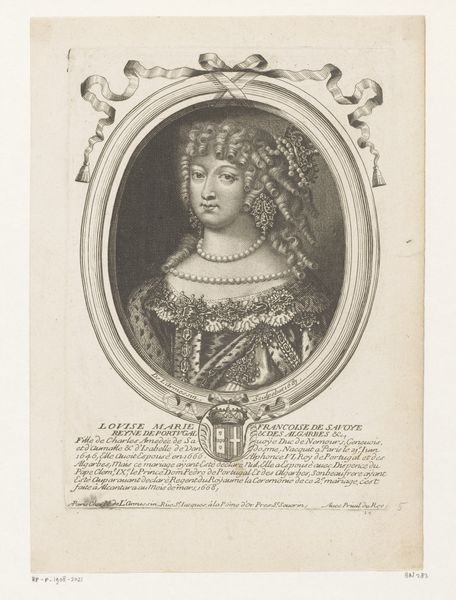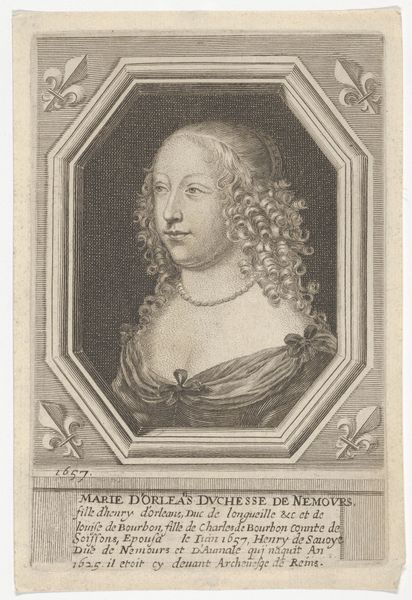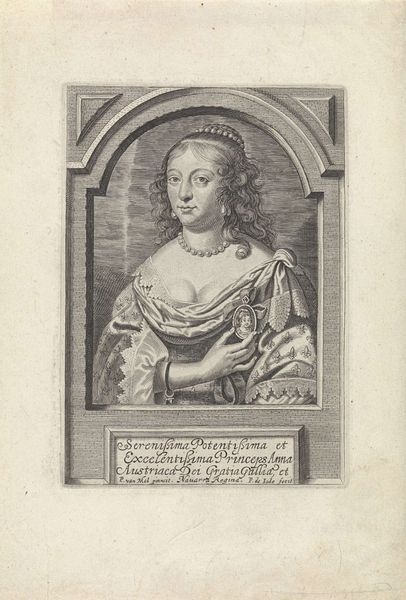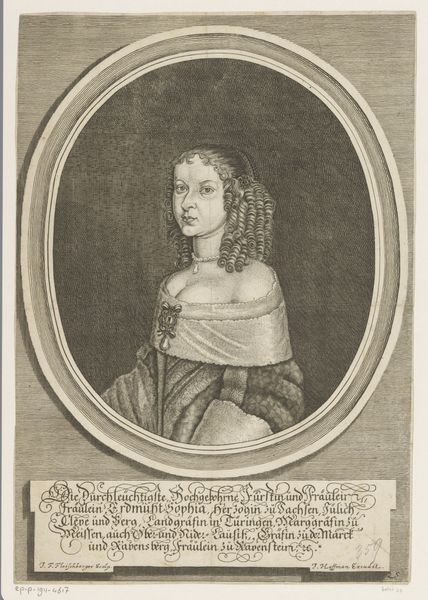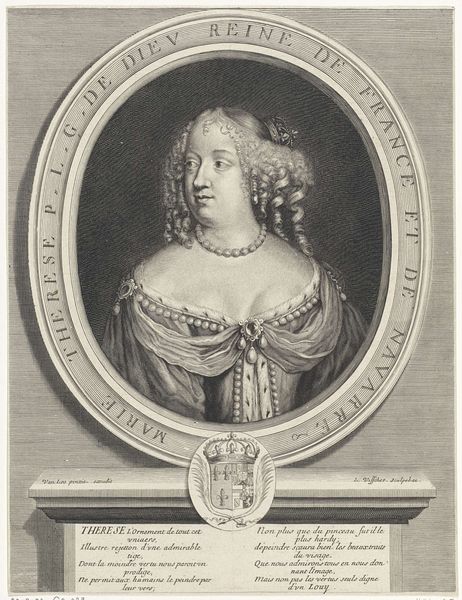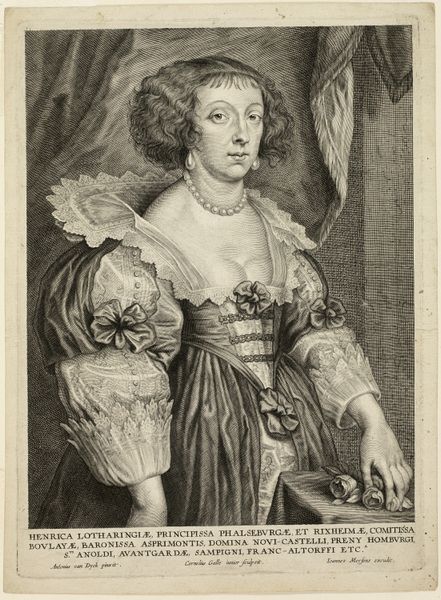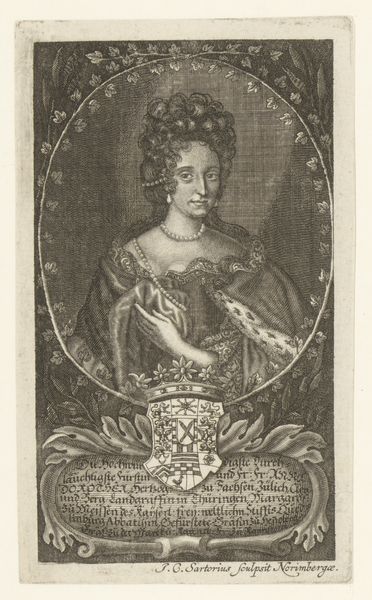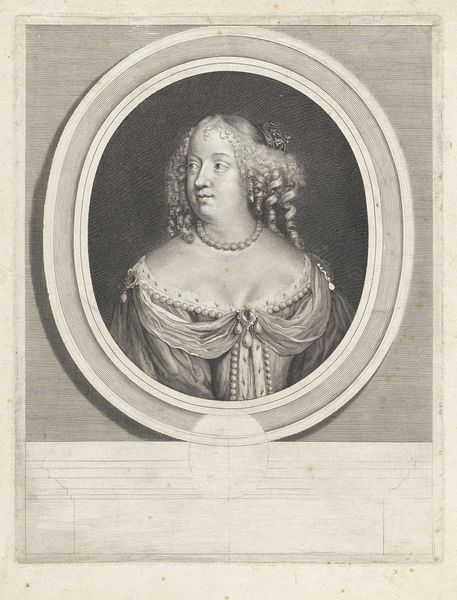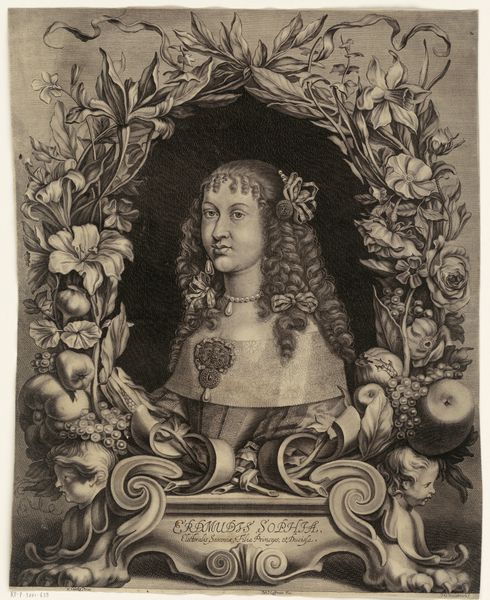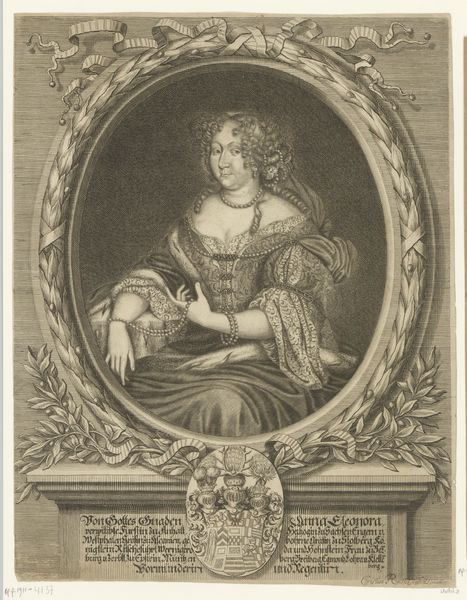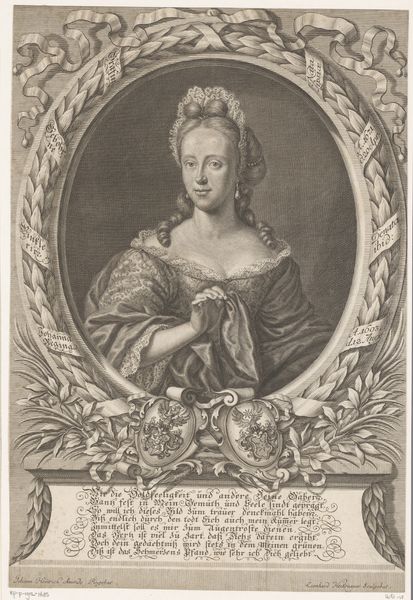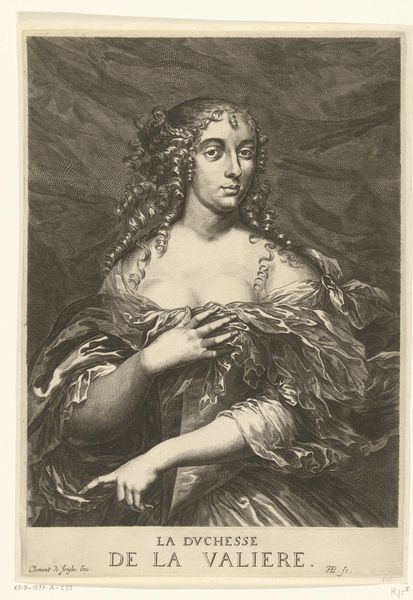
print, engraving
#
portrait
#
baroque
# print
#
figuration
#
history-painting
#
engraving
Dimensions: height 167 mm, width 120 mm
Copyright: Rijks Museum: Open Domain
Curator: There's a curious quietude to this piece. I feel like I've stepped into a rather intimate moment, a paused breath. The artist has captured something beyond mere resemblance. Editor: Indeed. Here we have an engraving titled "Portret van Anna Marie Louise van Orléans." It’s an anonymous work, dating roughly between 1645 and 1679 and held in the collection of the Rijksmuseum. We see a young woman, likely of noble birth, presented within a faux window frame. Curator: Yes, the frame, the drape—it’s theatrical, isn't it? It hints at staged representation, almost like she's an actress in her own life. It adds to the captivating stillness. What do you make of the artist choosing an engraving technique? Editor: Engraving, especially in this era, signified a level of detail and permanence. It speaks to the enduring power and status of the sitter, as a noblewoman in 17th-century France, specifically as the daughter of the Duc D'Orleans. The intricacy allows for meticulous depiction of her clothing, her hairstyle – signifiers of wealth and rank. The fact that we don't know who produced it, perhaps, points to ideas of access to portraits only by the elite. Curator: You know, her gaze is striking. It's neither inviting nor rejecting, more like she's observing us as much as we're observing her. It reminds me of those early photographic portraits. But even with all the period detail, there’s a vulnerability that transcends the historical distance. It whispers secrets, of course. What do you imagine they are? Editor: Her neutrality, in my view, highlights the constraints placed upon women of her status. The passivity, dictated by the expectations of marriage and dynasty. She becomes a symbol within a much grander narrative about power. It is striking that so many pieces related to gender are credited as from "Anonymous", even to this day. I wonder how her life, as a daughter within one of the major houses, must have been. It's sad, a quiet life determined by something that happened centuries ago. Curator: I’ll hold onto that image, thank you. For me, there’s an echo of us all, caught between expectation and aspiration, performance and truth. Isn't that what the finest art always holds?
Comments
No comments
Be the first to comment and join the conversation on the ultimate creative platform.
